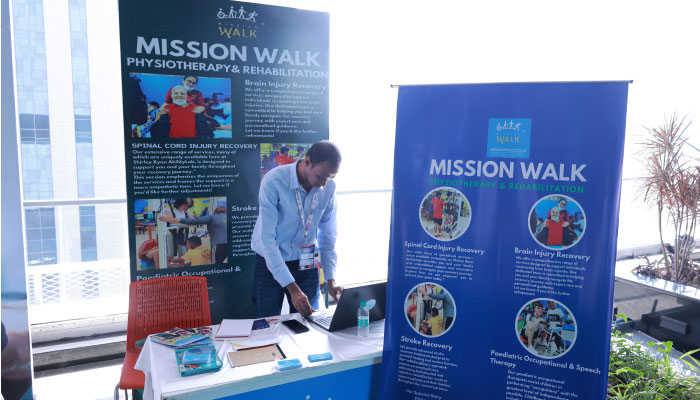Eyes are the windows to the soul. Don’t let diabetes damage it. High blood sugar in diabetes can cause serious harm to your organs such as heart, brain and kidneys, and especially eyes. In diabetics, it is important that the eyes are examined regularly to prevent diabetes-related eye complications.
Basic structure of eye
The eye is a ball-shaped organ. The white structure that we can see is the outer coating called the sclera, which is covered by a thin covering of mucus membrane called conjunctiva. The white sclera is transparent at the front of the eye and is called the cornea. Behind this structure is the colored part of the eye called the iris. The iris forms a hole in the center called pupil. With the help of the iris, pupil can adjust its size to regulate the amount of light that reaches retina. Aqueous humor is the term for the clear fluid that fills the space between the cornea and the iris. This fluid maintains the pressure inside the eye; glaucoma is the term used when this pressure is high. The lens sits behind the iris and helps in facilitating the light reach the retina, the innermost lining of the eye. The gel-like fluid behind the lens is called vitreous; it helps in keeping the retina in place. Retina has many nerve endings which send inputs to the brain through the optic nerve. The central part of the retina is called macula and is responsible for straight and central vision. All these structures are very important for us to see properly.
Eye problems caused by diabetes
High blood sugar can injure the lens, vitreous, the retina and the optic nerve. The nerves and small blood vessels that supply oxygen and nutrients to the various structures in the eyes, may get damaged due to high blood sugar. If not detected and treated early, it may worsen the eye sight leading to blindness. The most common eye problems in diabetics are retinopathy, cataract, and glaucoma.
Diabetic retinopathy
Poorly controlled or uncontrolled diabetes damages the tiny blood vessels that supply oxygen and nutrients to the retina giving rise to diabetic retinopathy. In the initial stages, the blood vessels to the retina bulge slightly (microaneurysm) and may leak blood or fluid. As the disease progresses, macula, the portion of retina responsible for central and straight vision, gets damaged and the vision becomes worse. This condition is called maculopathy.
As the disease advances, due to lack of oxygen from the original blood vessels, new blood vessels are formed which are weak and may break leading to leakage of blood and fluid into the vitreous blocking the vision. Scar tissue near retina may also form detaching the portion from the back of the eye resulting in blindness.
Cataract
Cataract is an opaque and cloudy area that develops in the normally clear lens. Cataract results in blurred vision. Individuals with diabetes have twice the risk of developing cataract than those without diabetes due to the persistent high blood sugar levels. Diabetics may develop cataract at a younger age than their healthy peers.
Glaucoma
Glaucoma is the condition when fluid pressure of Aqueous humor builds up in the eye causing damage to the optic nerve resulting in loss of sight. People with diabetes are twice likely to suffer from glaucoma.
Signs of diabetic retina damage
Sometimes you may not experience any visible signs of diabetes retina damage or you may notice or more of the following:
- You may be unable to see things clearly, have double vision of blur vision.
- You may see rings or flashes or blank spots. Dark or floating spots.
- You may feel pressure or pain in either of the eyes or in both the eyes.
- You cannot see the objects from the corner of your eyes.
If your retina is damaged, try to keep your blood sugar and blood pressure under control to prevent further damage to the retina.
Treatment of diabetic eye complications
Diabetic retinopathy cannot be cured. But before retina gets severely damaged, loss of vision can be prevented using laser surgery. Following are the some of the treatments available.
- Focal/grid laser treatment: Laser surgery is used to block abnormal blood vessels from leaking blood and fluid into the eye.
- Panretinal laser treatment: Laser surgery is deployed to seal leaking blood vessels over the entire retina
- Vitrectomy: The procedure is used to treat diabetic retinopathy in advanced stage where hemorrhages from the tiny vessels cause clots in the vitreous. As a result the light cannot pass through it. In the procedure, delicate instruments are used to suck out blood-filled vitreous.
Cataract is treated by a surgical procedure where the clouded lens is removed and replaced by a plastic lens.
Glaucoma in diabetes is treated by medications in the form of pills and eye drops, laser procedures and surgery. The objective of the treatment is to decrease the pressure of the fluid in the eye.
Preventing diabetes related eye problems
To prevent eye problems due to diabetes, the most important measure is to control blood sugar levels. As high blood pressure can be harmful, check your blood pressure at least four times a year. Take your medications regularly as advised if your blood pressure is higher than 130/80 mm Hg. Even if your vision is normal, have your eyes checked regularly at least once a year. This will help to identify any eye problems at an early stage and prevent them.
You can stop further loss of sight and prevent further deterioration by undergoing the treatments as advised including surgery and medications. Engaging in physical activity is an essential measure. Discuss with your physician as to how you can engage in active lifestyle and reduce the risk of any related eye problems. If you are a diabetic and have the habit of smoking, try to quit the habit. Obtain a professional help to help you to quit the habit.
If you are a diabetic, eye care is vital
A persistently high blood sugar has a deteriorating effect on all the body organs, and your eyes are no exception to it. Early detection and timely intervention can prevent loss of vision, therefore, it is essential to get regular eye examinations. You can help yourself by keeping your blood sugar levels under control by following a healthy diet regimen and doing regular exercise.



